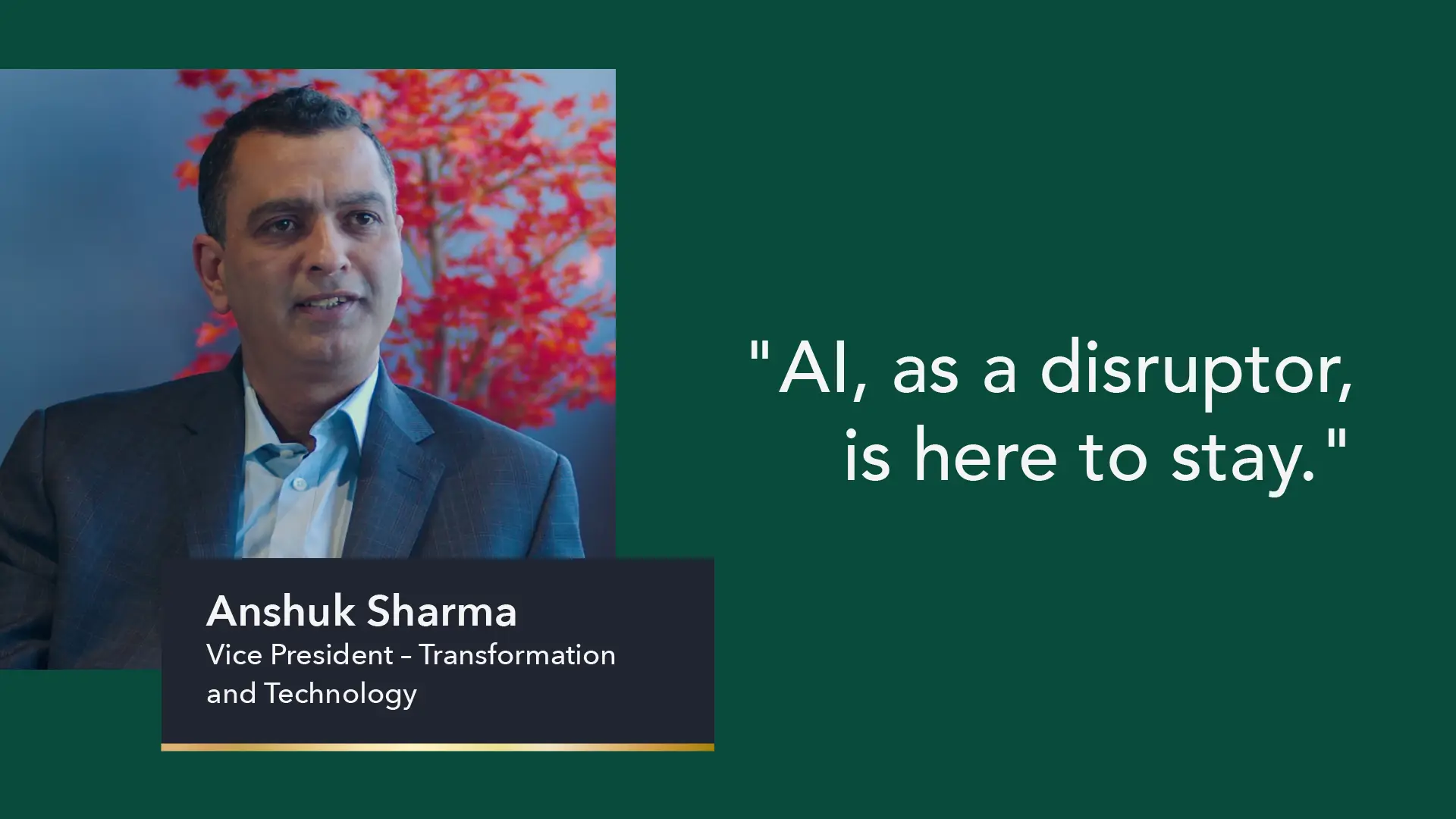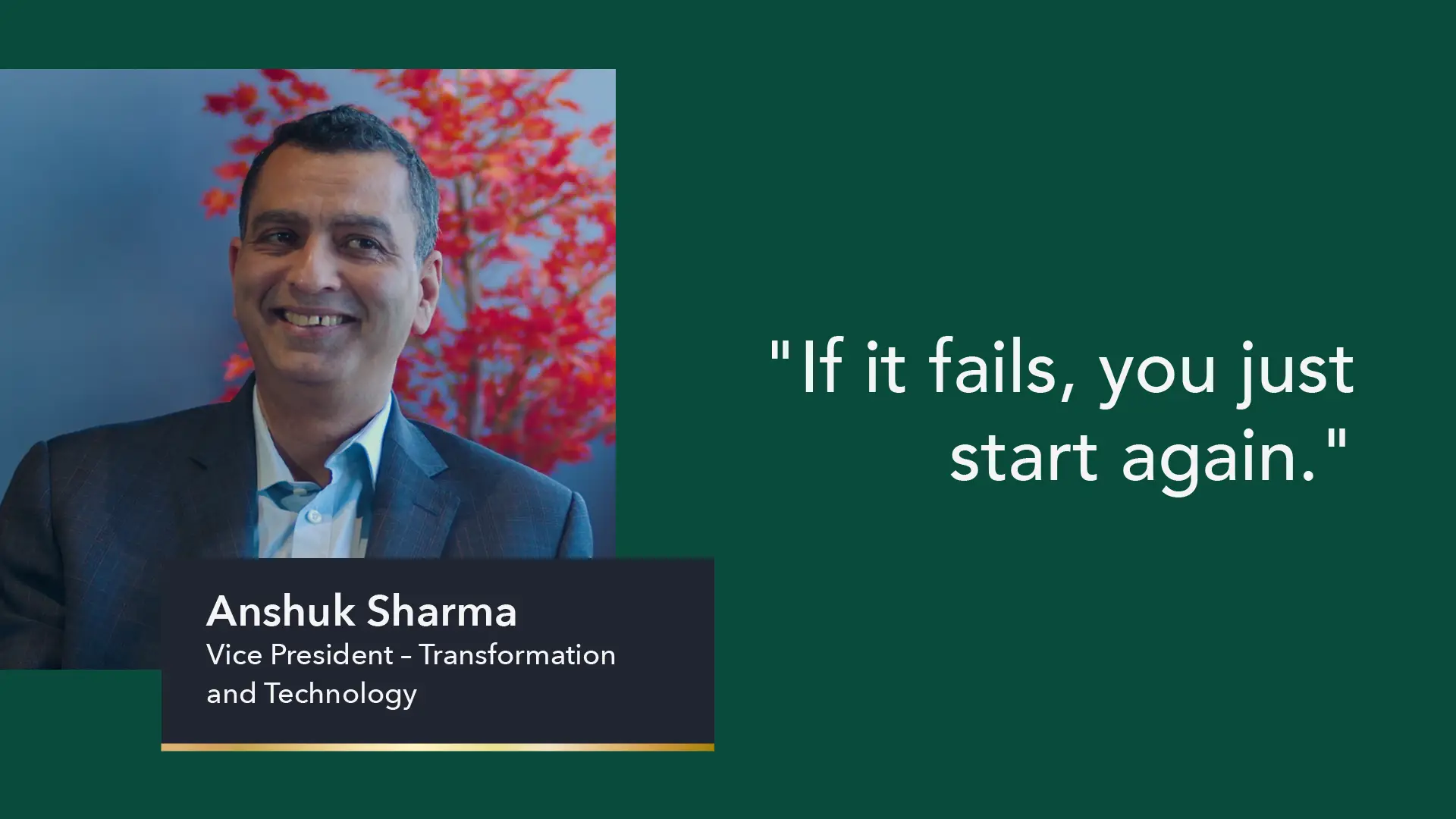

Written by Senior Partner Dan Edwards
"Transformation isn't about replacing people, it's about supporting them." - Kiran Kachela, Founder & CEO, CI Projects
In the past 15 years of placing executives across industry, I've witnessed countless transformations – but nothing compares to the potential of AI adoption. The conversations in boardrooms have shifted dramatically, and I want to share some insightful perspectives.
Recently, I sat down with three leaders who’ve been deep in the trenches of AI implementation: Scott Cooper, Managing Director at Ideal Bathrooms; Kiran Kachela, Founder and CEO at CI Projects; and Anshuk Sharma, Vice President – Transformation and Technology. What struck me wasn’t just their technical expertise, but their hard-won wisdom about what truly works when you're trying to make AI stick in a real business.
The Leadership Reality Check
Here’s something that won’t surprise anyone operating at C-suite level: AI initiatives often fail when they’re treated as IT projects rather than business transformations. In our recent conversation, Scott Cooper put it perfectly: "For AI to be successful in business, like any project, it needs sponsorship. In my business, that's been very much from the top, and then it cascades."
But here’s the twist I’m seeing more often: it’s not enough for leaders to simply approve AI budgets and delegate implementation. The most successful transformations I’ve witnessed involve CEOs and senior executives who are genuinely curious about the technology, asking tough questions and getting their hands dirty with the details.
In my discussion with Kiran, she reinforced this point: "You can't go into a transformation and say we're just going to focus on the introduction of technology without people. It all has to pivot around people – and that starts with leadership."
This resonates deeply with what I see in my recruitment work. The executives who thrive in today's environment aren’t just strategically minded – they’re the ones who can bridge the technical and human sides of transformation.
The People Conversation That Actually Matters
Every AI discussion eventually comes back to the same question: “What about our people?” And honestly, this is where I see the biggest divide between companies that succeed and those that struggle.
Scott shared a brilliant example from his business: "Our customer service team didn’t love typing orders – it was the worst part of their job. DORA (their AI assistant) does that now. The team are now freed up to have better conversations with customers."
This isn’t just good PR; it’s smart business. From a recruitment perspective, the leaders who attract the best talent are those who can articulate how technology amplifies human capability rather than replaces it.
Kiran’s approach particularly resonates with me: "We start every transformation by talking to the people – not reading process documentation. People know where the problems are."
In my experience recruiting at the executive level, this people-first mindset is what separates the leaders who drive lasting change from those who simply implement systems.
Rethinking the Value Equation
There needs to be a fundamental shift in how leaders measure success. Too many organisations still approach AI through a pure cost-cutting lens: faster, cheaper, more efficient.
But leaders who have implemented the most successful AI applications think differently. As Kiran put it: "Is value in an organisation all about cutting heads? Or is value actually about growth – about delivering more for your customer?"
Scott echoed this sentiment: "Align your AI projects up with your strategy. Don’t do it for vanity."
This strategic alignment isn’t just nice to have – it’s essential for building the kind of organisational momentum that makes transformations stick. And from a recruitment perspective, it’s far easier to attract top talent to AI initiatives that are clearly linked to growth and innovation, rather than pure cost reduction.
The Startup Advantage (and What Big Companies Can Learn)
A fascinating insight came from my conversation with Anshuk, particularly around how different-sized organisations approach AI: "Startups use AI for innovation and disruption. Big companies use it for efficiency. Startups are faster to pivot, quicker to fail, and better at finding niche value."
When recruiting for startups, they look for leaders who can move fast, experiment, and find creative solutions with limited resources. Corporate searches, meanwhile, often focus on leaders who can manage complex implementations and drive efficiency at scale.
But Anshuk shared something that really caught my attention: "Six or seven startups I’ve worked with pooled funds to share SaaS licences. They’re resourceful. They prioritise spending. They focus on what actually matters."
There’s a lesson here for enterprise leaders: sometimes the constraint is the catalyst. The most successful AI applications don’t necessarily have the biggest budgets – they have the clearest priorities.
Managing the Fear Factor
Let’s address the elephant in the room: people are genuinely worried about AI. And in my experience, leaders who dismiss these concerns or try to sugar-coat them tend to create more resistance, not less.
Kiran was refreshingly honest about this:
"Employees often protect the process because it’s linked to their role, their purpose. Change feels threatening unless we show them the value."
Scott’s approach to building trust resonated with me as well:
"We made DORA feel like part of the team. And we were transparent when things went wrong. That built trust."
This transparency isn’t just good change management – it’s essential leadership. Executives in AI-driven transformations need to be comfortable with uncertainty, honest about setbacks, and skilled at maintaining team cohesion through periods of significant change.
Building Bridges Between Worlds
A thought-provoking insight came from Anshuk about the disconnect between startups and corporates:
"Startups feel isolated. They could benefit from the experience of corporates. But corporates could also benefit from the agility and innovation of startups. Until you become a unicorn, there’s hardly anything which comes from big companies. We need a bridge."
This resonates with me, as I see brilliant startup founders who could benefit from enterprise operational expertise, and corporate leaders who could learn from startup agility. But these worlds rarely intersect in meaningful ways.
The organisations that are winning with AI are finding ways to bridge this gap – whether through partnerships, acquisitions, or simply by bringing in leaders who’ve worked across both environments.
What Does This Mean for Leaders?
After these conversations, several themes keep surfacing in my discussions with clients and candidates:
Leadership must be genuine, not just supportive. The days of delegating transformation are over. Today’s successful leaders are hands-on, curious, and willing to learn alongside their teams.
People-centric approaches win. The most effective AI implementations start by understanding human needs and pain points – not by focusing solely on technology capabilities.
Value creation beats cost-cutting. Organisations that frame AI as a growth enabler, rather than an efficiency play, tend to build more sustainable momentum and attract better talent.
Smart spending matters more than big budgets. Resource constraints often drive better decision-making and clearer priorities.
Trust is built through transparency. Leaders who acknowledge uncertainty and share both successes and failures tend to maintain higher engagement through periods of change.
What does this mean from an Executive Search perspective?
What does this mean from a recruitment standpoint? The executive profiles that are winning in AI-driven transformations have evolved significantly. We need leaders who combine strategic thinking with genuine curiosity about technology; who can build trust while driving change; and who understand that successful transformation is ultimately about people – not just systems.
The most valuable leaders in this space aren’t necessarily those with the deepest AI expertise, but those who can navigate the human dynamics of technological change while keeping their organisations focused on value creation, not just efficiency gains.
If you're leading or considering an AI transformation, the message from these practitioners is clear: start with purpose, lead with empathy, and build with transparency. The technology will evolve – but the fundamentals of good leadership remain constant.
Dan Edwards is a Senior Partner at GRG Executive Search, specialising in interim B2B and Industrial executive finance recruitment. Connect with Dan on LinkedIn.



